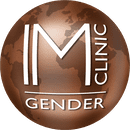Cisgender women and transgender men who have not undergone hormone treatments or chest surgery are the group in which most breast cancer cases occur. For this reason, early detection screenings are key to identifying it at an early stage and ensuring timely access to treatment.
Transgender people are often excluded from early breast cancer screening programs. In reality, there are few studies on the subject to confirm or highlight the risk of breast cancer in transgender people. Below, we explain everything you need to know about this topic.
How can hormone treatment affect Trans People?
Research shows that estrogen use in post-menopausal cisgender women can increase the risk of developing breast cancer, according to the U.S. National Cancer Institute and other studies. Although data in transgender women is limited, some healthcare providers believe the same may apply to those who have undergone feminizing hormone therapy.
As a general guideline, transgender women over 50 years of age who have received estrogen treatment for more than five years should undergo breast cancer screening. Likewise, transgender women with a family history of breast cancer (BRCA-2 mutation, Lynch syndrome, among others) should undergo breast cancer screening in accordance with international guidelines.
There is also no clear evidence that the use of androgens in the masculinization process can cause cancerous tumors to form in the breasts of transgender men, or reduce their incidence. More conclusive medical studies are needed.
It is important to remember that gender reassignment treatments – whether hormonal or surgical, such as mastectomy or breast augmentation – alter the mammary gland tissue. For this reason, at IM GENDER we emphasize the importance of biennial breast cancer screenings starting at age 50. Early diagnosis is decisive for saving lives and successfully combating the disease.
What are breast cancer screening tests based on?
The increase in breast cancer survival rates in recent years is largely due to early detection screenings. This is why it’s so important to see a doctor for regular check-ups.
Breast cancer screening tests involve examining the breasts by hand (physical exam) or using advanced technology (breast ultrasound, mammogram, magnetic resonance imaging) to identify the disease before the patient begins to experience symptoms or reaches an advanced stage. This way, it can be detected early and treated in time to stop its progression.
Types of tests to detect breast cancer
There are different tests for detecting breast cancer. Your doctor can explain each one, along with its benefits and risks, so you can make an informed decision.
- Mammogram: This is an X-ray of the breasts. It is one of the most commonly used and most effective techniques for detecting cancer in women. A mammogram can detect the disease before the tumor becomes palpable. It can identify small foci such as microcalcifications, which cannot be felt by touch, and even ductal carcinoma if present.
- Breast Magnetic Resonance Imaging (MRI): This device uses magnets, radio waves, and hydrogen atoms to capture images of the human body. Due to the magnetic field and its effects on the body, MRIs are only performed when a person is at high risk for breast cancer or when strictly necessary.
- Clinical Breast or Chest Exam: This is a physical examination performed by a healthcare professional to detect possible lumps, pain, or discomfort in the patient’s breasts.
Diagnostic techniques may vary between cisgender, transgender, and non-binary people and should be adapted to each individual case. Similarly, cancer treatment may also differ from one person to another.

Who should get breast cancer screening?
Breast cancer screening is recommended from age 50, when the risk increases.
Screening is particularly recommended for transgender men who have not undergone any gender-affirming chest surgery. Also, it is essential to evaluate hormonal status, risk factors, and family medical history, for transgender women.
Symptoms of Breast Cancer: How to identify it
In many cases, patients are unaware they have breast cancer because they have no symptoms. However, sometimes symptoms are present, or the person may sense that something is not right in their body. The most common symptoms of breast cancer include:
-
- Feeling a lump in the breast or underarm.
- Increased breast size or swelling.
- Redness or flaking of the breast skin.
- Skin irritation in the area.
- An inverted or painful nipple.
- Nipple discharge containing blood.
If you notice any of these changes, see a healthcare professional promptly for evaluation.
At IM GENDER, we specialize in gender reassignment treatments. If you are a transgender or non-binary person, we offer an early diagnosis service to take care of you and your health. Contact us to answer your questions or schedule your appointment.
Do you need more information about breast cancer?
Contact IM GENDER and we’ll inform you.






